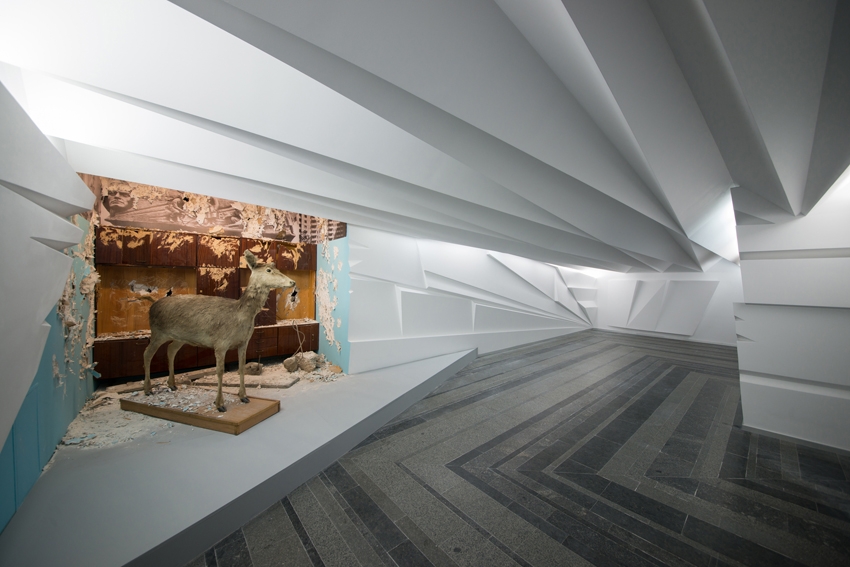In the spring of 2014, among the vast crowds of antigovernment protesters encamped in Kyiv’s Maidan Nezalezhnosti (Independence Square), were a series of ramshackle vegetable patches. Despite the pitched street battles that surrounded them, the gardens survived and produce grew, tended by an army of activists that included Nikita Kadan.
Kadan is no stranger to political action. During Ukraine’s 2004 Orange Revolution he formed the Revolutionary Experimental Space to give an artist’s voice to the anti-vote-rigging protests; his later network, the Artist Workers’ Self-Defense Initiative, was born of frustration at the way that Ukraine’s public art-institutions toadied to the government, even unto self-censorship. Yet there’s a strong link between Kadan’s activist work and his studio practice. His interest in the political and social symbolism of horticulture, born of last year’s protests and connected to an ongoing fascination with architecture, ran through a recent exhibition at Waterside Contemporary in London, for example. Diagrams, taken from an old Soviet manual on how to display produce in a horticulture show, further doctored by Kadan (burlesquing government interference in every facet of society), demonstrate upright, freestanding boards that one might pin sketches to. The artist then realised these designs alongside a recreation of a Maidan vegetable patch – though within this context, the display boards, painted dazzling white with nothing attached, additionally evoked the spectre of crowd barriers and riot cages.
Alongside this installation, which in its entirety was titled Limits of Responsibility (2014), Kadan displayed a series of watercolours, Untitled (2014), in which the botanical and the anatomical were subtly welded together. The work of Kadan, whose soft speaking voice belies his anger at the situation in his home country, is characterised by its subtle delivery of activist commentary. In his earlier Procedure Room series (2009–10), for instance, the artist line-drew various instances of police brutality on delicate porcelain plates. Other works have seen him portray the heavy burden of Soviet and postindependence history that Ukraine continues to shoulder. In The Catalogue of Opportunities (2012) Kadan collected archive photographs of Soviet-era architecture, physically cutting out the sections of the buildings on which advertising hoardings are now hung; and in the architectural installation Hold the Thought Where the Story Was Interrupted (2014) he recreated a room from a ruined regional museum (complete with taxidermied stag) and placed it in an architecture composed of slick, white geometric walls reminiscent of neomodernist war memorials. Some of the actual museums, located in eastern Ukraine, that the work references are near-ruins, literally crumbling while the violence continues, but metaphorically so too, in a situation in which multiple narratives of nationhood are competing with each other.
Kadan says of himself that he has two lives, dictated to him by Ukraine’s democratic precarity: in times of action he’s an activist, in times of reflection he’s an artist. In reality, of course, these two aspects are poignantly, inextricably entwined.
Nikita Kadan is based in Kyiv, where he has been involved in a number of artist-run campaigns, including a call to boycott the Second Kyiv International Biennale of Contemporary Art after the venue, Mystetskyi Arsenal, was accused of censoring an earlier exhibition. In 2011 he won the PinchukArtCentre Prize, and in 2015 his work will feature in the Istanbul Biennale, curated by Carolyn Christov-Bakargiev. Selected by Oliver Basciano, managing editor, ArtReview.
Read all of our 2015 FutureGreats profiles
This article was first published in the March 2015 issue.
